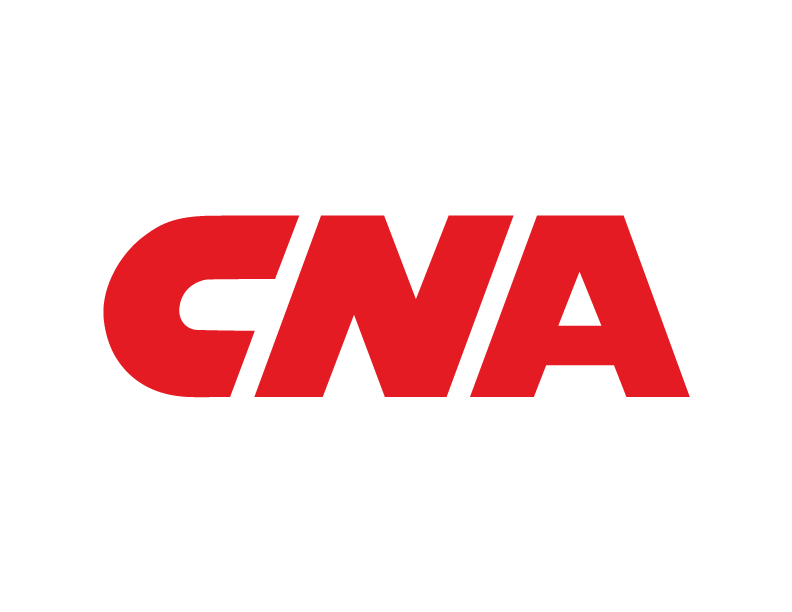5 Strategies to Reduce Slip and Fall Claims in Banks, Financial Institutions
For banks and other financial institutions, a continuous focus on adapting to regulatory changes, minimizing systemic risks and anticipating the effects of economic shifts is essential. And while your financial institution faces more complex challenges today than ever before, it is critical not to overlook the physical exposures that are more within your control. You want to not only protect the financial security of your customers, but their physical safety as well.
Slips and falls can happen to anyone at any time, and proper maintenance of interior flooring is key to reducing these risks. Financial institutions are often located in Class A buildings and seek recognition through programs like Leadership in Energy and Environmental Design (LEED). Floorings commonly feature high-end flooring such as terrazzo or natural stone (marble, granite, limestone, etc.). While these surfaces can beautify your facility, they require more stringent cleaning and maintenance protocols to reduce slip and fall risks.
In a study Slip and Fall Study Report: Enhancing Floor Safety through Slip Resistance Testing, Maintenance Protocols and Risk Awareness, CNA Risk Control walkway specialists examined and tested hard surface flooring in commercial settings over a two-year period, including banks. Fifty percent of surveyed sites did not produce a dynamic coefficient of friction (DCOF) level, the measurement of a surface's slip resistance while walking on the floor surface, above the minimum threshold set by the American National Standards Institute (ANSI A326.3), leaving half of these facilities vulnerable to potential slip and fall claims1.
And ignoring these potential exposures can be costly. According to CNA claim data, slips and falls that result in general liability claims cost an average of $30,000, while workers' compensation claims average more than $26,0002. And while less common, in instances where a traumatic brain injury occurs, those claims can jump nearly 10 times those amounts.
However, there are steps you can take to ensure your interior floors are properly maintained to reduce slip and fall exposures. Consider implementing the following five strategies:
- Select the right cleaning agent and method. While your bank's high-end terrazzo flooring may appear to be clean and shiny on the surface, it may be hiding slip and fall risks not visible to the naked eye. For example, flooring that is cleaned with the wrong type of agent and not maintained according to manufacturers' recommendations can cause contaminates – i.e., gravels, water, dirt and cleaning particles – to layer over the original surface. This can actually leave your floors more slippery than before they were cleaned.
Terrazzo and natural stone, such as marble and granite, require a neutral pH-based agent and thorough rinsing. Other cleaning agents, such as an acidic-based materials, can damage these floors. Alkaline-based agents can convert contaminates into soap, resulting in a surface that is more slippery. It is important to carefully read labels to understand what cleaning product pairs best with what type of floor.
- Keep LEED-certification compliance in mind. Under LEED certification, not only must you ensure that cleaning products and maintenance methods are compatible with your facility's flooring materials, they must also be eco-friendly. If you outsource the cleaning and maintenance of your floors, confirm that your vendors understand both the requirements of using eco-friendly cleaning products and the selecting the right cleaning agents for the surface material.
- Implement controls to raise risk awareness. Proper care and maintenance of your bank's floor surfaces is only part of the equation. You must also consider the human element that comes into play when customers visit your facility each day. Most people are naturally aware of hazards that affect the safety of floors, and change their behaviours to avoid such hazards, such as slowing down while walking on a visibly wet floor. However, age, reduced vision and other environmental factors can affect a person's risk awareness.
To keep people safe on their feet, keep walkways clear, free of obstructions and in good repair. Keep slip and fall signage on hand, and replace worn floor mats as needed. Display signage in areas noting floor elevation changes, and use design/decorative colour selection for visual contrast and to reduce glare. Large planters, pictures and decorative objects can also serve as visual cues for floor changes. Consider additional lighting to optimize a person's vision.
- Keep pedestrian entrances free of hazards. According to CNA Claim data, 40 percent of slip and fall claims occur mainly on entry flooring. Make sure building entrances are visible and free from obstacles. Water should quickly drain away from pedestrian areas to keep feet dry when entering the building. Snow/ice management is also important.
Mats can also help trap outside walkway dirt and water before they reach your floors and create a possible exposure. To be most effective, purchase floor mats with slip resistant backing and beveled edges. Position the mats flat on the floor and ensure they are cleaned on a regular basis. Lastly, floor mats should cover an area for people to take three to four strides, approximately six to eight feet, before coming into contact with the flooring underneath.
- Know your vendors. If you contract your cleaning services, it is critical that you take steps to ensure that you are protected if the vendor fails to follow the right protocols and an accident occurs, resulting in a costly claim. For banks and other financial institutions, managing multiple contractual vendor relationships can be a challenge. Make sure you complete full background checks on all maintenance vendors to confirm they are financially stable, ethically sound and operate under a strong risk management structure. This includes having your legal representation review all vendor contracts to minimize your liability exposure, including making sure the necessary hold harmless agreements, waivers and certificates of insurance are in place. In addition, educate maintenance vendors to make sure they understand the appropriate floor cleaning products and methods that should be used for your flooring.
For more strategies on how to implement a slip and fall prevention program for your bank or financial institution, download the study today.
1 Slip and Fall Study Report: Enhancing Floor Safety Through Slip Resistance Testing, Maintenance Protocols and Risk Awareness, page 4.
2 Slip and Fall Study Report: Enhancing Floor Safety Through Slip Resistance Testing, Maintenance Protocols and Risk Awareness, page 6.
One or more of the CNA companies provide the products and/or services described. The information is intended to present a general overview for illustrative purposes only. Read CNA's General Disclaimer.
In Canada, products and/or services described are provided by Continental Casualty Company, a CNA property/casualty insurance company. The information is intended to present a general overview for illustrative purposes only. Read CNA’s General Disclaimer.

